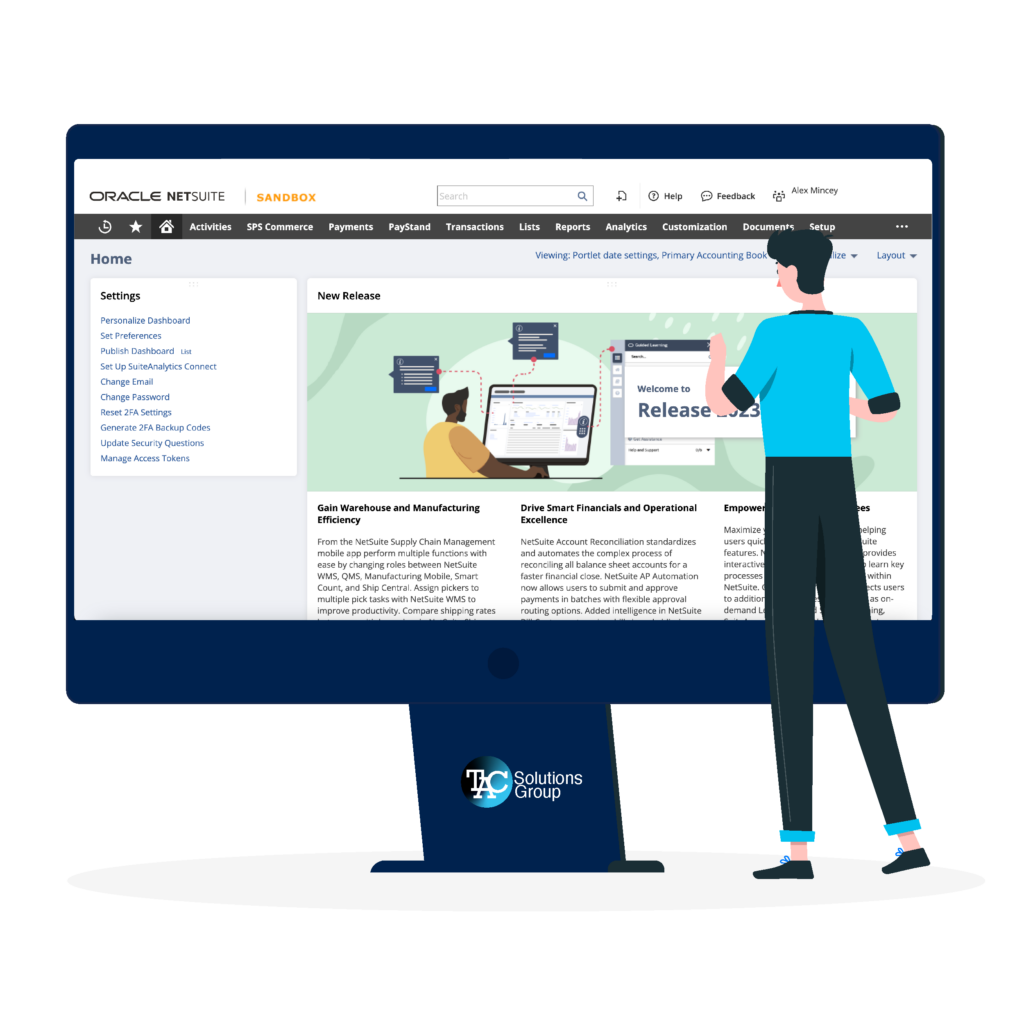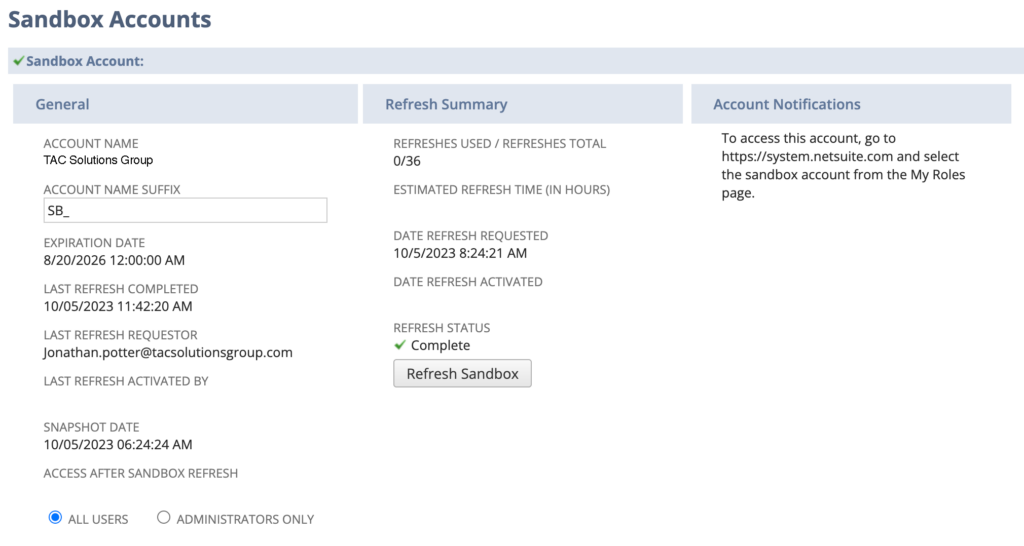
NetSuite sandbox refreshes are an essential part of maintaining a well-functioning environment. TAC, a leading NetSuite Alliance Partner, will guide you through this journey. This detailed guide outlines the proposed step-by-step process for refreshing your NetSuite sandbox, while also emphasizing best practices to consider before performing a sandbox refresh.
What is a Sandbox Account & Why is it Important?
One of the best features that NetSuite offers is sandbox accounts. A sandbox account is an isolated replica environment where users can train and enhancements can be tested without affecting financials, inventory, or any other element in your production account. Sandbox is crucial to utilize when developing and rolling out new customizations, making optimizations, and trying third-party integration features. Here, transactions can be created without financial impact, therefore sandbox is a great way to allow new users to get familiar with working in NetSuite without affecting production.
What is a Sandbox Refresh & How often should it be considered?
A NetSuite sandbox refresh is when all data existing within your production environment is copied over into your existing sandbox environment. Refreshing your sandbox account copies all data existing in your production account over to your sandbox. This includes customizations, transactions, reports, and inventory. Refreshing your sandbox is essential when testing new changes to make sure the environment is as close as possible to production.
So, when should you refresh your sandbox? Many NetSuite users recommend refreshing your sandbox every 3-4 months, which is a lot and only sometimes necessary, given you only have a finite amount of refreshers before you have to buy more. Another great time to perform a refresh is right after your production account has been updated to the newest version, this way any testing or customization will be done in the latest edition of NetSuite. Some of the best times to perform a NetSuite sandbox refresh are right after month-end close so you’ll have a fresh set of data to work with.
It is important to note all of the data that does not come over from a NetSuite sandbox refresh, see below:
- Inbound Single Sign-On Mappings
- SAML Configuration
- OAuth 2.0
- Token-Based Authentication (TBA)
- System Notes on Records
- SuiteFlow History Logs
- Customer Center Role Assignments for Customer Users
- Websites and Web Store Domains
- DomainKeys Identified Mail (DKIM)
Before a refresh, it is important to take into consideration many things. One of the very first things you should do is reach out to all sandbox business team leads to alert them of an upcoming refresh. Give users adequate time to perform any necessary backups on things they may be working on in the sandbox environment. TAC highly recommends giving notice about one week before the refresh so users are able to complete backups or take notes on their work before it is overwritten. It is especially important to alert any developers who may be working on script testing.
Another thing to consider is custom developments, which sometimes necessitate linking to a NetSuite production URL. This link could refer to the NetSuite file cabinet or a particular NetSuite record or object. It’s important to anticipate the repercussions of URL modifications in your NetSuite sandbox, for instance, by automatically adding the account ID with a suffix like “-sb1.”
How to Perform a NetSuite Sandbox Refresh:
- In order to perform a sandbox refresh, your account must have an active sandbox license and you must have the Administrator role assigned to you in your production account.
- Navigate to Setup > Company > Sandbox Accounts. Here you can view information such as when the last refresh was performed, and how many refreshes you have left, and much more. If you have multiple sandboxes, information on each one can be found here.

- On this page, you will see the Refresh Sandbox button. Once you click it, the Refresh Status will say In Process to reflect that the process has begun. In general, the process can roughly take anywhere from 12 to 24 hours to complete.
- When the process is complete, every user who has the administrator role will receive an email with the due date the sandbox needs to be activated.
- To activate your sandbox, an administrator needs to navigate to Setup > Company > Sandbox Accounts. You have 14 days to activate your account or else it will be deleted and the process will need to be redone.
- Your sandbox account will now reflect your production account at the date and time shown in the Production Snapshot Date field, which you can find on the sandbox account page.
Once the refresh is complete any individual customization done to your dashboard or color theme in sandbox will be reset and match production, best practice is to change the color theme in either your production or sandbox account to be able to differentiate between the two easily. When the refresh takes place, your personalized dashboard, theme, and font will all be copied over into the sandbox, making it easy to get confused when switching between environments. (Navigation: Home > Set Preferences > Appearance > Color Theme.) Production-specific links to specific shortcuts will also need to be updated in the sandbox, this is a quick update that can save time down the road.
How TAC Can Help
Keeping your sandbox up to date with your production account is key to being able to successfully test, develop, and customize your NetSuite environment. Maintaining your sandbox data will only help rollouts into production go smoothly. That’s where TAC Consulting comes in. With our tailored solutions, your testing, development, and customization processes are tailored for your company’s success. Trust TAC Solutions Group to keep your NetSuite environment finely tuned and ready for optimal performance.




